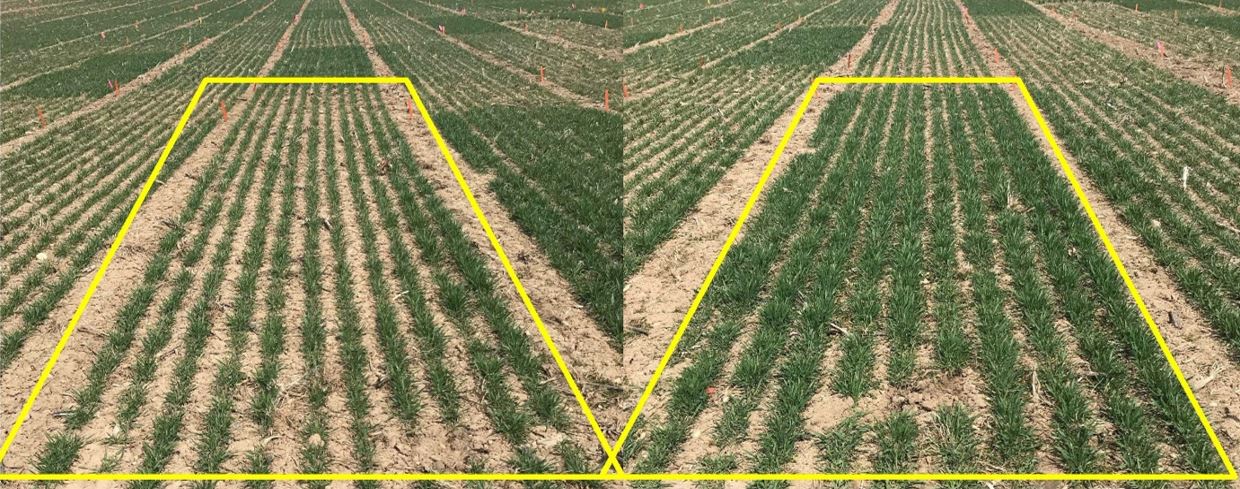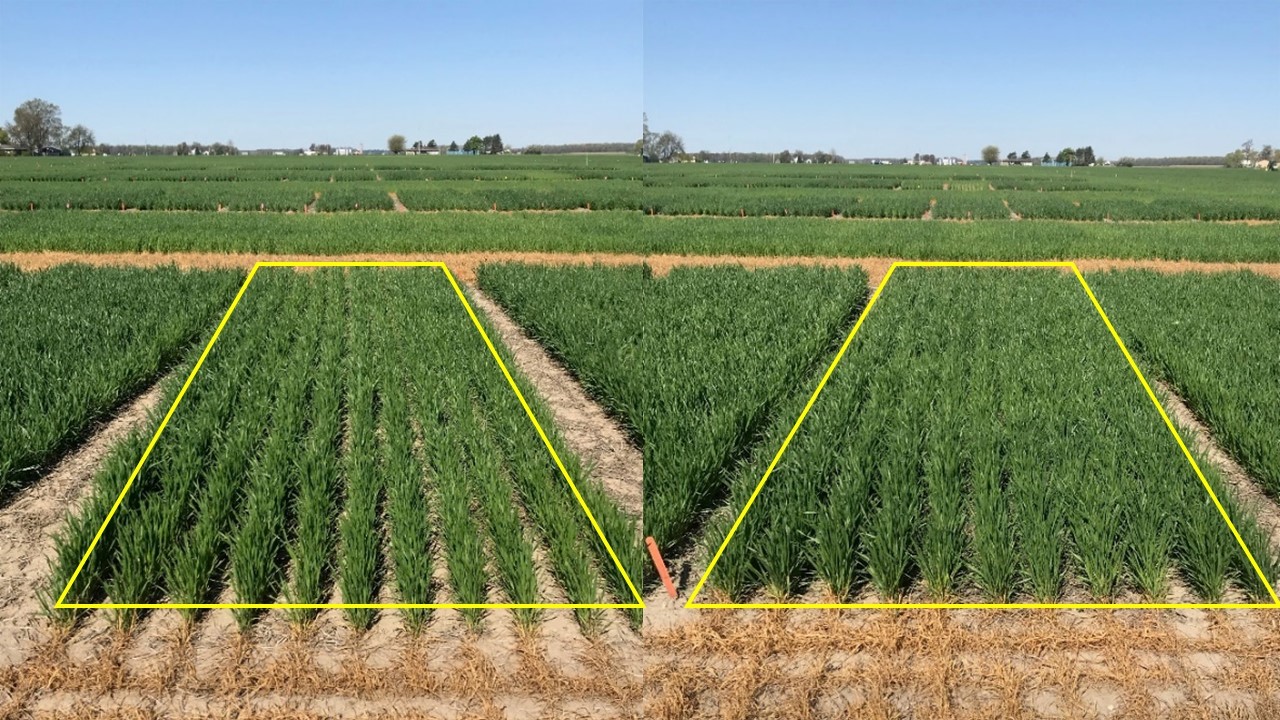Preparing winter wheat in the autumn for greater yield next summer
Considering autumn fertilizer management now may strengthen winter wheat yield potential.

“Start right to finish well” is a fundamental yet frequently forgotten phrase. This is often the case until one realizes something hasn’t started right and may not finish quite as well as initially planned. Managing winter wheat for greater yield potential begins in the autumn and may encompass multiple factors including planting date, varieties, crop rotations and residual soil test nutrient values, just to name a few. However, amongst all of the agronomic decisions a grower must take into account, autumn fertilizer application is often towards the top of the list and may play a role in optimizing winter wheat grain yields.
Over the last two field seasons, studies were conducted utilizing an omission trial design for evaluating individual agronomic inputs factors in soft red winter wheat. Yield differences were compared from wheat that received all six inputs (i.e., enhanced management) to wheat that had each input removed individually. Yield differences were also compared from wheat with no additional inputs except a base nitrogen (N) rate (100 pounds N per acre) (i.e., traditional management) to wheat with each input individually added.
Agronomic inputs chosen for evaluation included: seeding rate, fungicide, plant growth regulator, autumn starter fertilizer (250 pounds per acre 12-40-0-10S-1Zn), weekly nitrogen applications, and increased rates of nitrogen fertilizer (+33% of base nitrogen). Soil properties consisted of 2.1-2.8% organic matter (PM), 12-33 parts per million (ppm) phosphorus (P), 8-9 ppm sulfur (S) and 2.5-3.4 ppm (zinc) Zn. Broadcast applications of 130 and 65 pounds P2O5 were applied to all plots in 2018 and 2019, respectively, based on soil test values and to reduce opportunities for a phosphorus-only yield response.
Removing autumn starter fertilizer from enhanced management at 0.9 million seeds per acre reduced yield 14 – 38 bushels per acre across 2018 and 2019. Adding autumn starter fertilizer into a traditional management program planted at 1.8 million seeds per acre increased yield 10 – 26 bushels per acre across 2018 and 2019. Based on residual soil test phosphorus values, broadcast phosphorus applications across all plots, and low level of wheat responsiveness to zinc applications in Michigan, the positive grain yield responses to autumn starter fertilizer may be due to the nitrogen and sulfur components within the autumn starter.
The sulfur component consisted of 50% sulfate and 50% elemental sulfur. Sulfate-sulfur is plant available while elemental sulfur oxidizes into sulfate over time. In this application, sulfate was readily available for plant nutrient uptake while the elemental sulfur oxidized later in the season for extended availability. When limited prior to planting, nitrogen in the autumn starter fertilizer can promote additional plant growth and require additional sulfur, which is becoming increasingly limited, to produce differences in both growth and development (Figs. 1 and 2).


Autumn starter fertilizer can greatly affect plant growth when winter wheat is planted during optimal conditions. In 2018 and 2019, planting dates consisted of Sept. 20 and Oct. 19, respectively. Addition of autumn starter to traditional management at 1.8 million seeds per acre in 2018 increased plant tiller production by 73 tillers per square foot (Figs. 1 and 2). Tillering only increased by 21 tillers per square foot in 2019 likely due to the later planting date. However, pre-plant soil nitrate-N values were less than 5 ppm (0-12 in.) across both growing seasons, indicating a greater potential response and economic return to starter nitrogen applications.
Heading into winter wheat planting season, residual nitrogen availability, though quite variable, is often greater following corn than soybean. Thus given the vast quantity of precipitation that can occur between autumn and spring greenup, consider a pre-plant soil nitrate sample prior to utilizing an autumn starter fertilizer as both agronomic and environmental considerations must be taken into account. Greater plant growth response to autumn starter fertilizer may exist with timely planting in combination with optimal conditions promoting additional autumn tillering.
Pre-plant soil sampling also applies to phosphorus applications, as significant wheat yield response to phosphorus applications in Michigan are not consistent when soil test phosphorus values are greater than 25 ppm (Bray-P) or 33 ppm (Mehlich-3P), even when phosphorus has been applied in-furrow. Given the continued decline in atmospheric sulfur deposition and greater potential for response, sulfur application may be something to consider if sulfur hasn’t been previously applied to other rotational crops (i.e., two to three growing seasons). Around 25 pounds sulfur per acre should suffice across much of the Michigan production region, but take note on the sulfur source as several new products are now available that may have sulfate-S, elemental-S or a combination of the two. Site-specific field conditions, soil texture, crop rotation, local environmental factors, and pricing may influence which to choose.
Consider crop price, fertilizer cost, potential yield response, and profitability of individual inputs including autumn starter fertilizer prior to adopting widely-implemented multiple input management programs. Despite yield increases to product additions, greater profitability may still be achieved at lower grain yields if specific inputs adopted turn out to protect or reduce yield losses that may or may not occur.
For additional information on this research trial and others, please visit the Michigan State University Soil Fertility Research website and view our online video updates.
Dr. Steinke’s work is funded in part by MSU’s AgBioResearch.



 Print
Print Email
Email